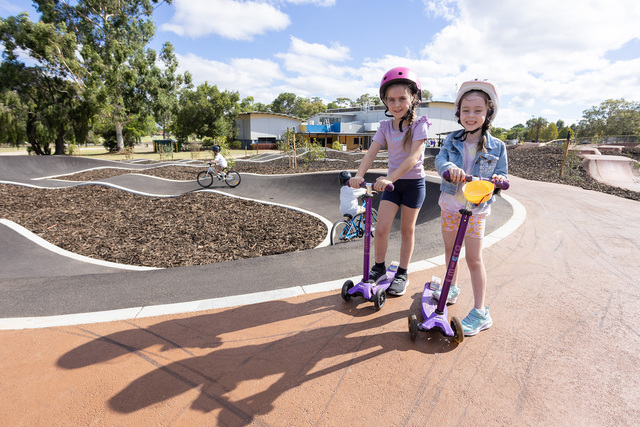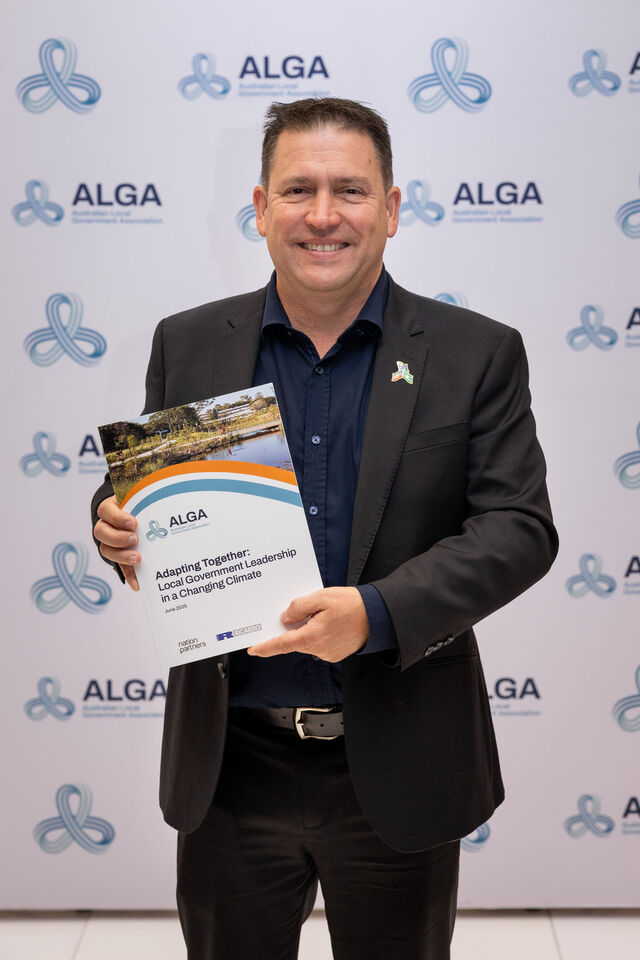Alderman John Rawnsley, Alice Springs Town Council, Northern Territory
Q. How long have you been on Council?
General elections were held across the Northern Territory in March 2008. This is my first term.
Q. Why did you become involved in Local Government?
Local Government enables greater input in local decisions. Councils play an important role in delivering services and responding to the Town’s needs. There are several large projects in the planning stage and these projects will make a profound difference to the direction of Alice. Our Town is also at the epicentre of substantial policy reform across governments and Council serves as a forum to respond to this reform, while also serving as a base to express new and innovative ideas.
Q. Tell us about your Local Government area.
Alice Springs is a modern Town, incredibly rich in its diversity and pluralism. Council serves a population of approximately 27,000 people. Arrente people are recognised Native Title holders for land within the municipality. There are descendants of pioneering families who built Alice, recently arrived immigrants, Aboriginal visitors from some 260 communities in the region, transient workers from across Australia, and North Americans involved with the defence facility at Pine Gap.
Tourism is a major industry, with a number of spectacular areas in the region, including Kings Canyon, the Larapinta trail, Uluru (Ayers Rock) and Kata Tjuta, Palm Valley, to name a few.
Q. What issues are important to you?
While core business is the principal focus, many of the issues of concern to residents require solutions across agencies and governments. Council continues to advocate what it sees as solutions, and many Aldermen as individuals contribute to the public policy debate. I find it important to advocate what I see is good for the town, our young people and the future.
Q. What challenges are facing your Council?
Due to our large social service sector, as well as the town geology and planning, Council oversees one of the largest non rateable property areas in Australia. Compared with other municipalities, our rates base provides for a much larger percentage of residents who reside on non rateable land. High mobility in this region creates added pressure on resources. In the decade prior to this, Council rates were raised by minimal amounts. It is the culmination of these factors that create the challenge of sourcing revenue to expand services and establish new developments. The newly formed Shires surrounding Alice will serve as a mechanism to consolidate efforts and initiatives across the whole region and there will be opportunities to strategically address the challenges that face our region and town.
Q. What innovative projects is your Council working on?
Land within the municipality of Alice Springs is held by Native Title. While the old politics sought to polarise division, there is opportunity now to develop new ways of doing business. The previous Council supported the Native Title holder group, Lhere Artepe Aboriginal Corporation, in developing protocols concerning acceptable behaviour for visitors in Alice Springs. Council is currently looking at finding commonality between these protocols and bylaws, with a view to improve bylaw enforcement. The idea is to enable this right to compel individuals who repeatedly contravene bylaws to uphold their responsibilities. The model would only be effective if other culturally supportive mechanisms are put in place and Council is currently working with a range of stakeholders and agencies towards this goal. Bylaw observance is as much about strengthening informal social norms as it is about the formal aspects of policy. There is much to gain if we integrate and value the pluralism and diversity of our identies.
Q. What has been your greatest achievement on Council?
I am proud to be the first person elected across the Territory from the Generation Y (born 1980–1995). I am proud to serve with a fellow Aboriginal Alderman, Sandy Taylor. At our first meeting, I was fortunate to have the trust of fellow Aldermen to be elected Chair of one of three Standing Committees, the Technical Services Committee. We have three and a half years remaining and there is much to be done.
Q. What is the best part about being an Alderman?
The best part of being an Alderman is the opportunity to work with fellow members, who, as a group, broadly reflect the diversity and pluralism of Alice Springs. I find the best part is sharing ideas in a group with much to offer. We share a common goal of improving services and outcomes for our Town.
Q. Where can we find more information?
I have a blog located at www.rawnsleyj.wordpress.com
Alderman Natasha Griggs, City of Palmerston, Northern Territory
Q. How long have you been on Council?
I was elected in March and this is my first year on Council. Palmerston City Council has a Mayor and six Aldermen, who are elected for a four year term. Interestingly, the Mayor, who was previously Deputy Mayor, and a number of the current Aldermen have been on Council for a number of years, which is excellent for the City as it has ensured continuity and consistency across many long term strategic projects.
Q. Why did you become involved in Local Government?
I genuinely care about the Palmerston community and wanted to have a say in its future. I was inspired by the passion of some of Palmerston’s current and past elected members and believed that I had something to contribute.
Q. Tell us about your Local Government area.
Palmerston is a young, vibrant and tropical City, located
21 kilometres south of Darwin in the Northern Territory. Since its development during the 1980s, Palmerston has been one of Australia’s fastest growing areas, and was only declared a City on
2 August 2000. With an average age of 28, Palmerston’s population of 25,000 people is primarily made up of families. Around 30 per cent of the population is under 15 years old. The city centre has two major shopping complexes, including the Territory’s only Target store, various sporting clubs, restaurants, pubs, a skate park, cinema and other specialised shops. The City itself has ten suburbs currently developed – Driver, Gray, Woodroffe, Moulden, Durack, Farrar, Gunn, Rosebery, Bakewell, and Marlow Lagoon. With the Northern Territory Government’s recent announcement to release around 3,000 additional blocks of land, Palmerston will have three more new suburbs in the near future.
Q. What issues are important to you?
Having a business background, I am particularly interested in ensuring Council operates effectively, yet delivers outstanding services for our residents. Other issues I am interested in include having a safe community, responsible animal management and abolishing the dreaded plastic bag.
Q. What challenges are facing your Council?
Like many councils around Australia, one of our most significant challenges is the rate of growth and the pressure it has on our infrastructure and resources within the community.
Q. What are the key aspects of being a good Alderman?
In my view, to be a good and effective Alderman, a person must be passionate and caring about their community. They also need to have a solid understanding of business principles which underpin the operation of their council. Other equally important attributes include being a team player, good listener, proactive, community spirited, outcome focused and a strategic thinker.
Q. What is the best part about being on Council?
It is really humbling to know that people elected you because they believe in your ability to be effective on Council. I have really enjoyed all aspects of being on Council – the diversity of the role is really appealing to me. People often describe me as a ‘people person’. I suspect this is a polite way of saying I am someone who would stop and chat with anyone, anytime, anywhere. As an Alderman, this is an essential part of the role and I love it!







